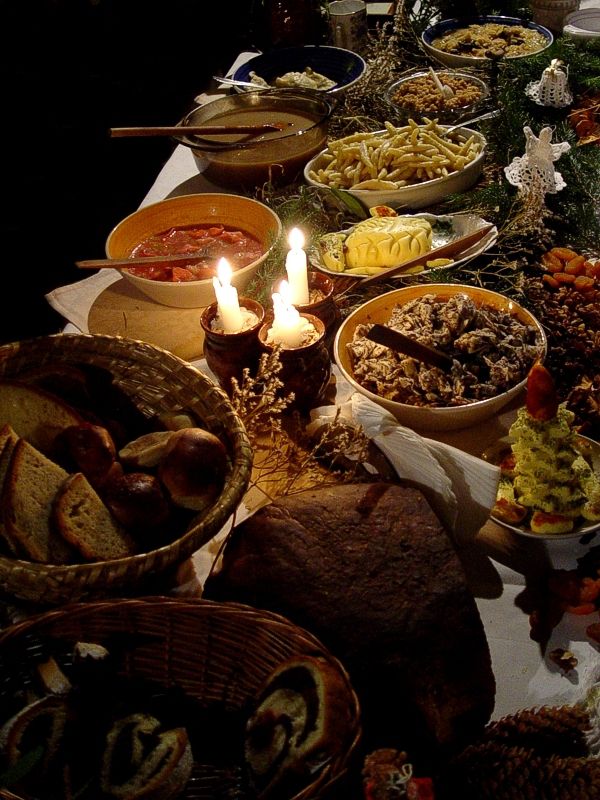The Wigilia supper and remnants of ancient Slavic customs
Preparations for Christmas, celebrated on 25th and 26th December, begin many days before – people collect the most important ingredients for the traditional supper known as Wigilia. This supper is held on Christmas Eve in Poland, and it has preserved many remnants of ancient Slavic customs, making it a unique and culturally significant event for Poles around the world.
The Origins of Wigilia Supper
The tradition of Wigilia dates back to the early Christianization of Poland, when a meatless meal was served on Christmas Eve to honor the birth of Jesus Christ. Over time, this meal evolved into the elaborate Wigilia supper that we see today, complete with 12 meatless dishes representing the 12 apostles. The number 12 is also said to symbolize the 12 months of the year.
Traditional Dishes
The Wigilia supper consists of various traditional dishes, with some regional variations. However, there are some staple dishes that are commonly found at the table, such as borscht with mushroom-filled dumplings, carp, sauerkraut, pierogi, and kutia, which is a sweet grain pudding. These dishes are often prepared using recipes that have been passed down through generations, adding to the cultural significance of the meal.
Remnants of Ancient Slavic Customs
The Wigilia supper has preserved many remnants of ancient Slavic customs, such as the use of hay under the tablecloth to symbolize the manger where Jesus was born. An empty place setting is also left at the table for any unexpected guests or for deceased family members, a tradition that dates back to pagan times. These customs add a layer of spiritual and historical significance to the meal, making it a deeply rooted tradition in Polish culture.
Celebrating Wigilia Supper Today
Today, many Polish families around the world gather to celebrate Wigilia supper. The meal is typically followed by the sharing of the Christmas wafer, known as opłatek, which is a thin, unleavened bread. Each person breaks off a piece of the wafer and exchanges good wishes for the upcoming year. This gesture symbolizes forgiveness, unity, and love, and is an important part of the Christmas Eve tradition.
Conclusion
In conclusion, the Wigilia supper is a time-honored tradition that has deep roots in Polish culture and history. It is a time for families to come together, share a meal, and celebrate the birth of Jesus Christ. With its connection to ancient Slavic customs and its unique set of traditions, the Wigilia supper is a special and meaningful event for Poles around the world.
In summary, the Wigilia supper is a time-honored tradition that has deep roots in Polish culture and history. The tradition of Wigilia dates back to the early Christianization of Poland and has evolved into an elaborate meal with 12 meatless dishes. Some staple dishes commonly found at the table include borscht, carp, sauerkraut, pierogi, and kutia. The Wigilia supper has preserved many remnants of ancient Slavic customs, adding a layer of spiritual and historical significance to the meal. Today, many Polish families around the world gather to celebrate Wigilia supper, which is typically followed by the sharing of the Christmas wafer, known as opłatek. This gesture symbolizes forgiveness, unity, and love, and is an important part of the Christmas Eve tradition.
You can review our digital products by following us on Etsy.





